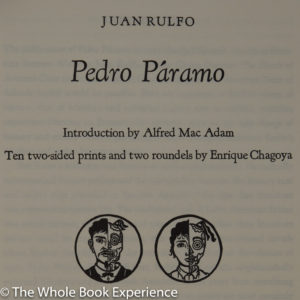 I guess a book resonates with you if you have a dream about being in the town that is the setting of the book. A couple of days after my last reading of Pedro Páramo, I was in Comala, a dream/ghost town populated by the people and events of budding magical realism. Like a dream, it is hard to figure out what exactly is going on, when it is happening, and if it really happened. Are living people talking to each other? Or are dead people talking to living people? Or is everybody dead? And like a dream the particulars can fade pretty quickly after reading. But if the dreamscape is written in a beautifully crafted piece of literature and manifested artfully by a private press, you can delightfully revisit the dream anytime with a re-read, culling new insights each time.
I guess a book resonates with you if you have a dream about being in the town that is the setting of the book. A couple of days after my last reading of Pedro Páramo, I was in Comala, a dream/ghost town populated by the people and events of budding magical realism. Like a dream, it is hard to figure out what exactly is going on, when it is happening, and if it really happened. Are living people talking to each other? Or are dead people talking to living people? Or is everybody dead? And like a dream the particulars can fade pretty quickly after reading. But if the dreamscape is written in a beautifully crafted piece of literature and manifested artfully by a private press, you can delightfully revisit the dream anytime with a re-read, culling new insights each time.
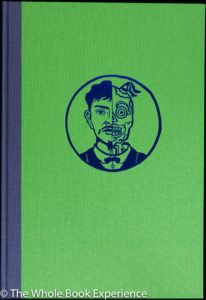 At his dying mother’s request , Juan Preciado goes to Comala to demand his birthright of his father, Pedro Páramo. As the novel progresses, he quickly finds out not only that his father is long dead but that is he himself is just one of the many, many children of that tyrant, who systematically raped the women of his domain. At least Juan was kind of legitimate, as it seems that Páramo married his mother, even if it was only to grab her assets and clear the debts he owed to her father. It’s unclear what she felt about it or whether she had any agency in the decision. But she was smart enough to leave with Juan at some time in his early life. Alas that she sent him back, possibly to his doom…
At his dying mother’s request , Juan Preciado goes to Comala to demand his birthright of his father, Pedro Páramo. As the novel progresses, he quickly finds out not only that his father is long dead but that is he himself is just one of the many, many children of that tyrant, who systematically raped the women of his domain. At least Juan was kind of legitimate, as it seems that Páramo married his mother, even if it was only to grab her assets and clear the debts he owed to her father. It’s unclear what she felt about it or whether she had any agency in the decision. But she was smart enough to leave with Juan at some time in his early life. Alas that she sent him back, possibly to his doom…
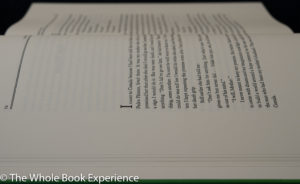 The novel is filled with the interesting people of Comala and infused with the events of the Mexican Revolution and the Cristero Rebellion. Adding poignancy to this setting, Juan Rulfo’s own family was murdered by the radical Catholics, or Christeros, during La Cristiada. He spent several years in an orphanage as a child before moving to Mexico City. The book intertwines the story of Juan Preciado’s journey with the story of his father’s life, again sometimes through the dialogue between Juan and the dead, and sometimes seemingly
The novel is filled with the interesting people of Comala and infused with the events of the Mexican Revolution and the Cristero Rebellion. Adding poignancy to this setting, Juan Rulfo’s own family was murdered by the radical Catholics, or Christeros, during La Cristiada. He spent several years in an orphanage as a child before moving to Mexico City. The book intertwines the story of Juan Preciado’s journey with the story of his father’s life, again sometimes through the dialogue between Juan and the dead, and sometimes seemingly 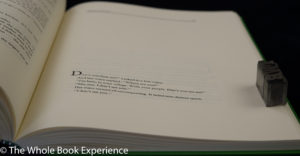 through memories manifested by the dead or by ease-dropping on them talking to themselves. Again, it’s magical realism, so it’s easy to get lost with who is saying what/when.
through memories manifested by the dead or by ease-dropping on them talking to themselves. Again, it’s magical realism, so it’s easy to get lost with who is saying what/when.
At any rate, Páramo is a tyrant who gradually acquires much of the land of 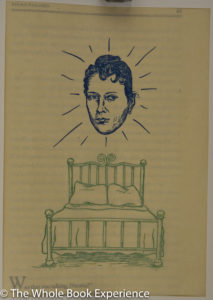 around Comala through marriage, murder, and manipulation while at the same time terrorizing the women with his lust. His son, or that is, one of his illegitimate sons, that he finally takes in once he realizes he needs an heir, is not any better. The village priest protects him because he “supports” the church and he has a lawyer to settle up with families whose daughters he has impregnated. And he has his strongmen, of course. Like I said, standard tyrant. Especially grating, given the tenor of our times, is the lawyer’s line to the expecting mothers that “at least the baby will have light skin.” Oy.
around Comala through marriage, murder, and manipulation while at the same time terrorizing the women with his lust. His son, or that is, one of his illegitimate sons, that he finally takes in once he realizes he needs an heir, is not any better. The village priest protects him because he “supports” the church and he has a lawyer to settle up with families whose daughters he has impregnated. And he has his strongmen, of course. Like I said, standard tyrant. Especially grating, given the tenor of our times, is the lawyer’s line to the expecting mothers that “at least the baby will have light skin.” Oy.
As the first person he meets on his journey summarized it:
Like they say, as far as the eye can see. He owns ever’ bit of that land. We’re Pedro Páramo’s sons, all right, but, for all that, our mothers brought us into the world on straw mats. And the real joke of it is that he’s the one carried us to be baptized. That’s how it was with you, wasn’t it?
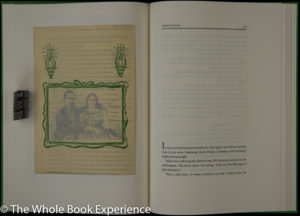 That from one of his half-brothers; maybe alive, maybe dead. And if that doesn’t set the tone, there’s this from a conversation with one of his mother’s friends of long ago:
That from one of his half-brothers; maybe alive, maybe dead. And if that doesn’t set the tone, there’s this from a conversation with one of his mother’s friends of long ago:
“I came to find Pedro Páramo, who they say was my father. Hope brought me here.”
“Hope? You pay dear for that.”
In the Introduction, Alfred Mac Adam states that:
Without Juan Rulfo, neither Carlos Fuentes’ The Death of Artemio Cruz (1962) nor Gabriel Garcia Márquez’ One Hundred Years of Solitude (1967) would be possible.
And further that:
… [Gabriel Garci Márquez] said that when blocked as a novelist after his first four books, it was only his life-changing discover of Pedro Páramo in 1961 that enabled him to write his masterpiece One Hundred Years of Solitude. He noted that all of Rulfo’s published writing, put together, “add up to no more than 300 pages; but that is almost as many and I believe they are as durable, as the pages that have come down to us from Sophocles.”
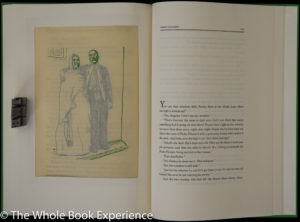 That’s pretty impressive given that this was Rulfo’s ONLY novel. While there are other fine novels out of Mexico, if you only read one, I don’t think you can go wrong with Pedro Páramo.
That’s pretty impressive given that this was Rulfo’s ONLY novel. While there are other fine novels out of Mexico, if you only read one, I don’t think you can go wrong with Pedro Páramo.
I gave up my subscription to the Arion Press years ago when my income situation changed so I could be more selective where I spent my smaller amount of discretionary income. Some of their releases make me miss those days more than others. This is one of them. It is one of the best “standard” editions they have released since even before my last subscription book, Leaves of Grass. Maybe since South of Heaven. Granted, I’m saying that without having most of the more recent ones in my hand to read or look at.
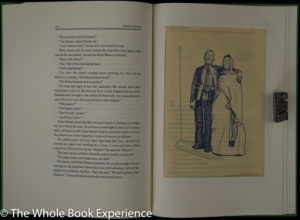 One of the main reasons for that judgment, aside from the writing itself, is that the illustrations work so well with the text. The artist, Enrique Chagoya, had to read Pedro Páramo as a student in a Mexican junior high school and typically did not appreciate it at the time. Rereading it for this edition was much more delightful than that compulsory reading. In regard to his artwork, he has this to say in the notes at the beginning of the book:
One of the main reasons for that judgment, aside from the writing itself, is that the illustrations work so well with the text. The artist, Enrique Chagoya, had to read Pedro Páramo as a student in a Mexican junior high school and typically did not appreciate it at the time. Rereading it for this edition was much more delightful than that compulsory reading. In regard to his artwork, he has this to say in the notes at the beginning of the book:
“The drawings are not an illustration of Pedro Páramo because the story does not need illustrations. It is more like a visual duet, an instrument playing a counterpoint parallel to the novel.”
 On the recto side of the transparent illustrations, there is a person with a faint dreamy or ghostly setting behind them. On the verso side, it is the setting that is solid and the person that is ghostly and fading. Very apropos to the narrative. This is achieved by printing his illustrations on translucent Japanese handmade Arakaji kozo paper and then mounting them into die-cut pages of the Italian mouldmade Magnani Ingres paper the text is printed on. The paper feels and smells magnificent as well, something that I love about many papers used in private press books.
On the recto side of the transparent illustrations, there is a person with a faint dreamy or ghostly setting behind them. On the verso side, it is the setting that is solid and the person that is ghostly and fading. Very apropos to the narrative. This is achieved by printing his illustrations on translucent Japanese handmade Arakaji kozo paper and then mounting them into die-cut pages of the Italian mouldmade Magnani Ingres paper the text is printed on. The paper feels and smells magnificent as well, something that I love about many papers used in private press books.
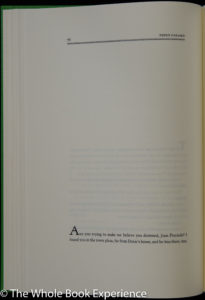 While I liked the effect of the whitespace at the beginning of each chapter, I was puzzled. I couldn’t make rhyme or reason of how the varying amount of space was chosen. Then I found on a reread of the prospectus that all the chapters end at the bottom of the page, and it seems that dictated where the start of the chapter would end up being. Aesthetically pleasing and mystery solved. Now I’ll probably like it even more on the next re-read.
While I liked the effect of the whitespace at the beginning of each chapter, I was puzzled. I couldn’t make rhyme or reason of how the varying amount of space was chosen. Then I found on a reread of the prospectus that all the chapters end at the bottom of the page, and it seems that dictated where the start of the chapter would end up being. Aesthetically pleasing and mystery solved. Now I’ll probably like it even more on the next re-read.
Pedro Páramo as manifested in this edition was a delight to read. It’s a manageable size, the Kennerly Old Style type is very readable, and the binding is simple but elegant with it’s stamped roundels by Chagoya. The slightly sparkly blue and green cloth over the boards is lovely. And always a plus for this book lover who abhors dusty books, the slipcase is also elegant and sturdy.
I also have a special reason to love this particular edition above and beyond my love for Rulfo and magical realism: I recommended it to Andrew Hoyem as a book he should publish. I also suggested that he use an artist I had come across in Querétaro who did Day of the Dead art that I thought would match the story well. While he declined at the time, upon finally reading the novel, he did indeed bring my wish to fruition, albeit with a different illustrator. He also generously gifted me one of the hors commerce copies years later for my recommendation. A well appreciated gesture as my high-earning, private press book buying days of high-tech sales are over and I’m a yogi-teamonger now. So I appreciate having this book on my shelf and thus having the opportunity to review it for the blog. As a sidenote, my first read of the novel, and my inspiration for the recommendation to Andrew Hoyem, was in the University of Texas Press edition of 2002. That one has beautifully fitting photographs by Josephine Sacabo. It out of print but is well worth tracking down if the Arion Press edition doesn’t fit your fancy or budget.
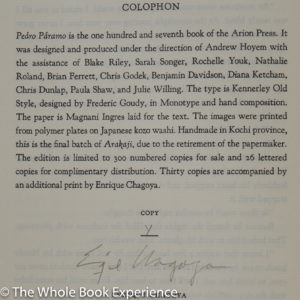 AVAILABILITY: This is the one hundred and seventh publication of the Arion Press. The standard edition is $850 in a limitation of three. It is also available with an extra print in an edition of thirty for $1,500. Both editions appear to be available from the press here.
AVAILABILITY: This is the one hundred and seventh publication of the Arion Press. The standard edition is $850 in a limitation of three. It is also available with an extra print in an edition of thirty for $1,500. Both editions appear to be available from the press here.

